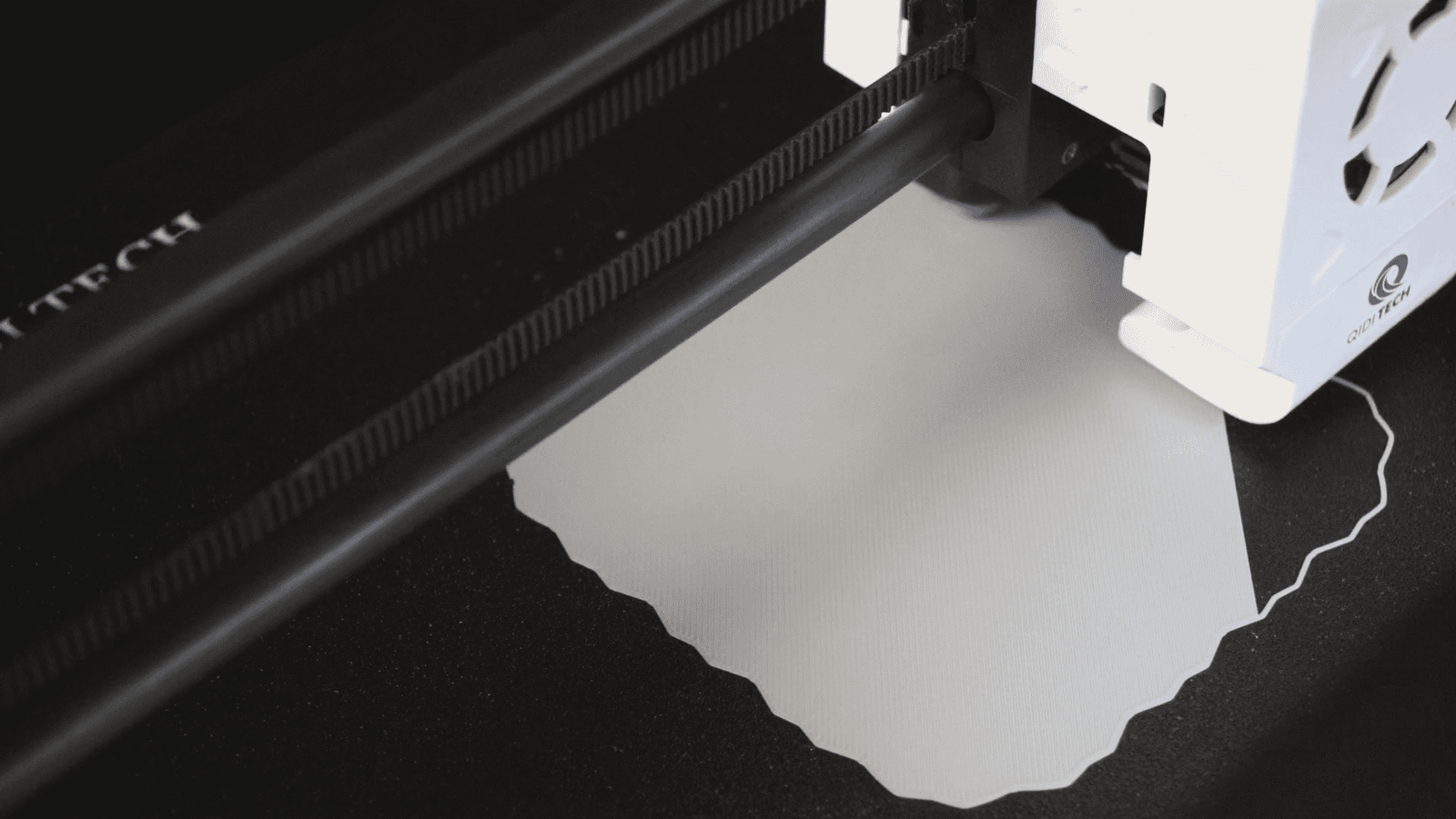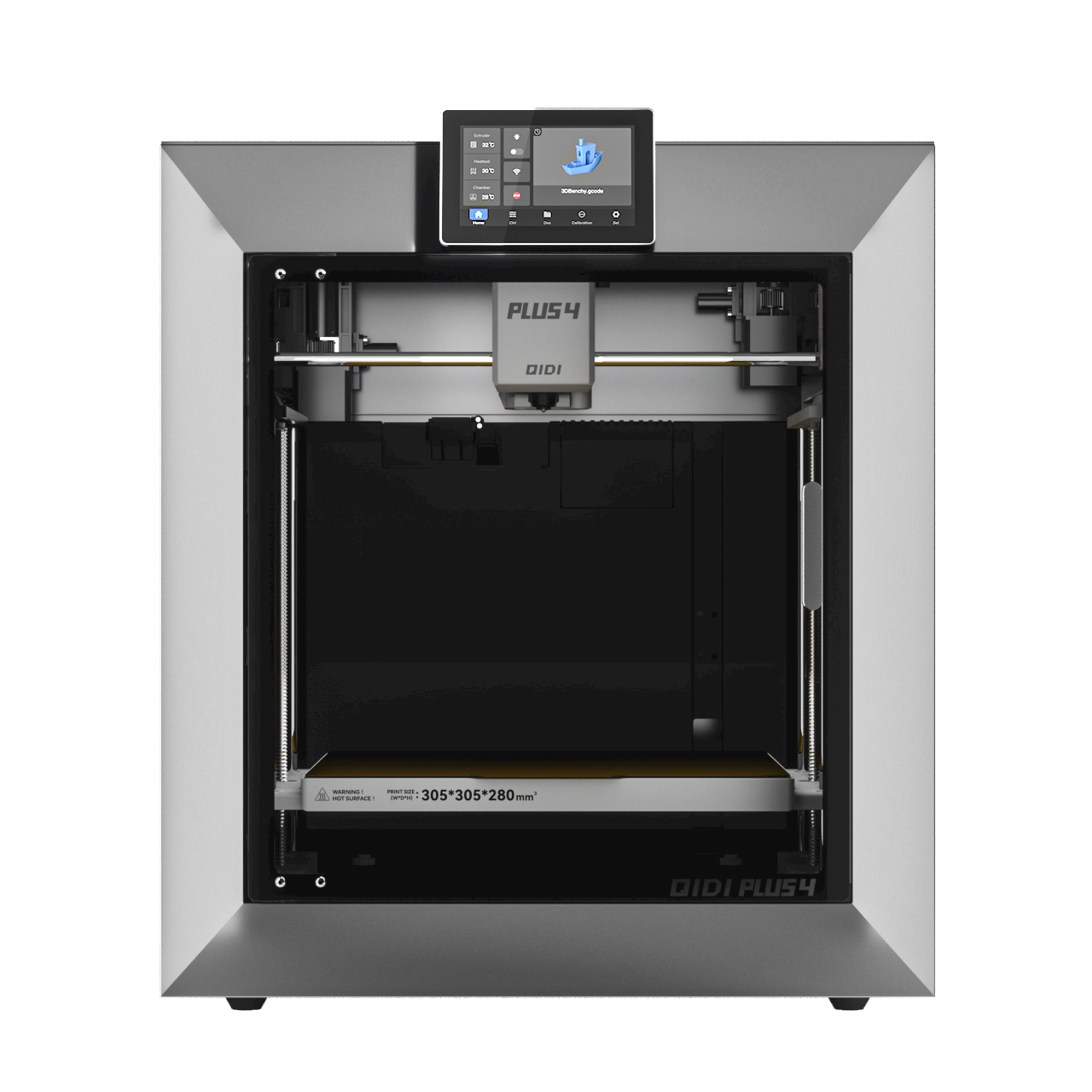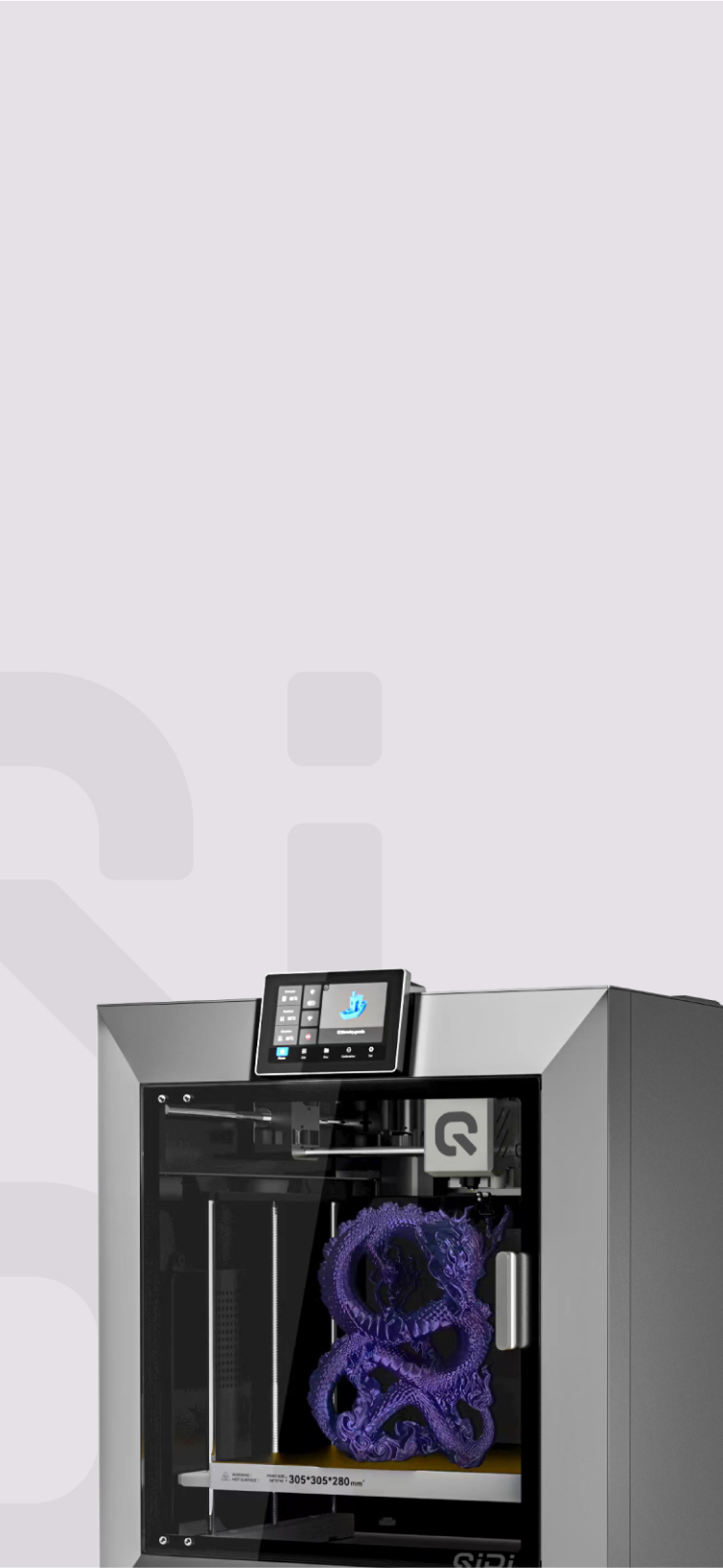What Is FDM 3D Printing?


Step into any modern machine shop, maker space, or even living room, and chances are you'll encounter that iconic sight - the boxy frame of a 3D printer, steadily fabricating plastic parts layer-by-layer like a robotic spider spinning geometric webs. Yet that seeming magic goes by a rather mundane name - fused deposition modeling, or FDM.
What is FDM 3D Printing?
FDM refers to the most common form of additive manufacturing technology in use today. As an accessible and reliable 3D printing process, FDM constructs objects by selectively depositing melted thermoplastic material layer-by-layer in predetermined print paths.
The term derives from the core principle of operation - filament feedstock is first heated to a semi-liquid state, then extruded and deposited onto a print surface where it quickly solidifies, fusing with the existing layers. As fine beads of plastic are laid down and bonded, parts take shape, emerging from the printing process.
Invented over 30 years ago, early FDM technologies produced prototypes from ABS plastic in commercial 3D printing services. Since then, FDM print capabilities have rapidly advanced thanks to developments in precise extruder mechanisms, diverse thermoplastic materials, and expanded applications - all meeting more affordable equipment costs.
Now the de facto standard in additive manufacturing, FDM 3D printing offers businesses and consumers alike a versatile digital fabrication tool, allowing rapid transition from 3D model designs into physical objects. Ranging from global production lines to desktop home setups, FDM's reputation for reliability continues to drive ubiquity as the technology reinvents manufacturing access in the 21st century and beyond.

How FDM 3D Printing Works
Let's explore the journey from file to tangible product through the essential stages of FDM 3D printing.
1. Design Stage
Every object that an FDM 3D printer creates begins as a digital blueprint. This is commonly crafted in Computer-Aided Design (CAD) software, where the design is meticulously modeled. Once completed, this digital model is saved in a file format such as STL or OBJ, which are formats that slicing software can interpret.
2. Slicing the Model
Once the design phase is complete, the next step involves using slicing software. This powerful tool takes the 3D model and divides it into hundreds or thousands of horizontal layers. The software then translates these layers into G-code, the language that instructs the printer on the precise movements needed to recreate the object layer by layer.
3. Preparation for Printing
With the G-code instructions ready, the printer is prepared. A spool of thermoplastic filament is loaded, and the printer preheats its nozzle to the temperature suitable for melting the material. This preparation ensures a smooth flow of plastic during the print job.
4. The Printing Process
Printing commences with the nozzle depositing the first layer of melted plastic onto the build platform. Moving along predetermined paths set by the G-code, the nozzle crafts the object's shape by adding layers one at a time. Meanwhile, the build platform descends incrementally after each layer, accommodating the addition of new material.
5. Cooling and Solidification
Directly after being extruded through the heated nozzle, the plastic cools rapidly, solidifying almost on contact with the emerging part or the build platform. Quick cooling ensures each new layer fuses firmly with the last, maintaining the integrity and form of the developing object.
6. Support Structures
Objects with complex designs often require temporary support structures. These supports prop up overhangs and stabilize intricate geometries during the printing process. They are designed to be easily removable and are taken away in post-processing, leaving behind the intended design.
7. Post-Processing
After the final layer is printed and the complete object is fully formed, any necessary post-processing is performed. This may involve removing the aforementioned support structures, sanding the surface to reduce layer visibility, and sometimes painting or treating the object to enhance its functional properties or aesthetic appeal.
By following these stages, FDM 3D printers convert digital models into physical, three-dimensional objects. This fascinating blend of design, technology, and materials science is what makes FDM 3D printing a cornerstone in the field of rapid prototyping and manufacturing.
Key Characteristics of FDM Prints
As with any manufacturing method, FDM 3D printing carries unique qualities inherent to the process. Getting to know these core FDM characteristics helps guide design choices.
- Anisotropic Strength: The layered adhesion pattern of 3D prints means parts are weaker, splitting between strata rather than tearing across them. Orientation optimization is key.
- Alignment Precision: Production variances ranging from 0.1-0.5% still enable high tolerances and fitting assemblies when carefully calibrated. Accuracy involves all systems.
- Horizontal Resolution: While layer thicknesses limit vertical precision, XY resolution depends on extruder nozzle size, typically 0.2 to 0.8mm for robust prints.
Getting intimate with the quirks of the FDM process enables full utilization, so creators conceptually solve challenges into opportunities.
Main Components of an FDM Printer
FDM printing takes digital 3D model files, like those exported from CAD software, and physically renders them into reality through the coordinated dance of just a few high-tech components:
- Filament: This wound reel provides the raw material - typically a 1.75mm or 2.85mm thermoplastic feedstock like ABS or PLA.
- Print Nozzle: Filament feeds into a hot-end nozzle heated to melt the material. Nozzle diameters averaging 0.4mm extrude precise beads of liquid plastic.
- Print Bed: Under precise positioning, the nozzle deposits melted filament onto the print bed, building up shapes layer by layer. Adhesion prevents warping.
- Gantry System: Motors coordinate the extruder nozzle in X/Y/Z dimensional space, guided along highly accurate print paths.
Repeating the sequence - melt, deposit, cool, and bond - FDM machines construct entire objects from the bottom up as two-dimensional layers accumulate vertically. After completing a layer, the build platform lowers, and the extruder nozzle deposits another melted plastic track directly atop the last until reaching the prescribed heights.
Before hitting print, digital model files require "slicing" to translate 3D geometries into numerical toolpaths - essentially G-code instructions. Like scanning bread, hundreds of imaginary horizontal cross-sections determine print layers.

Materials for FDM 3D Printing: More Than Molten Plastic
While FDM printing sees widespread use for its reliability and results across applications, the technology's rise owes partially to the broad palette of functional materials, bolstering its capabilities far beyond mere prototyping.
- Defining Thermoplastics: The printable materials underlying FDM advantage reside within a class known as thermoplastics - plastics that melt under heat yet recrystallize into solids when cooled. This reversible property allows precise deposition in liquefied states.
- Common Filaments: ABS and PLA filaments dominate as filament leaders, followed by brass fill, PETG, and flexible TPE for specialized applications. Further composites like wood or carbon fiber mixes expand possibilities.
- Exotic and Functional Filaments: Electrically conductive filaments embed circuits directly connecting printed objects to power or signals. Meanwhile, dissolvable support filaments improve overhanging designs but wash away when needed, disappearing like ghosts when their jobs finish.
- Choosing By Properties: Density, layer adhesion, UV resistance, and biodegradability help determine ideal materials for operating conditions, considering heat, outdoor exposure, or flexible snap-fit function beyond visual prototyping.
Real-World FDM Applications
Originally created for conveniently prototyping product design concepts, FDM proved so reliable that today FDM printers see widespread adoption for mission-critical fabrication roles across sectors.
- Rapid Manufacturing: Aerospace manufacturers utilize industrial FDM systems to print precise assembly jigs that hold aircraft component parts undergoing machining. By 3D printing these custom tools rather than outsourcing conventional fabrication, aircraft factories can iterate fixtures rapidly in-house as needs change.
- Education: Schools and universities have incorporated desktop FDM 3D printers into STEM programs enabling students to learn through creating physical prototypes of objects they design. Building ideas into reality motivates interest in engineering, technology, and modeling for applied science learning. Educational 3D printers make practical project experimentation cost-effective.
- Medical: FDM's healthcare impact expands daily through printing customized components matching patient anatomy with non-invasive medical imaging conversion to 3D models. Surgeons employ tactile 3D printed organ replicas aiding pre-surgical planning while engineers rapidly design and validate life-saving devices like FDM-produced nasopharyngeal swabs for high-volume COVID-19 sample collection.
- Distributed Manufacturing: Startups like Figure 4 and Adafruit leverage the plug-and-play scalability of desktop FDM platforms to locally fulfill specialty manufacturing orders on demand. Housewares, toys, gifts, and more print without overseas shipping while avoiding overproduction waste - streamlining personalization. Modular micro-factories bring custom crafts to Main Street storefronts.
From STEM classrooms to robotics labs or factory floors, FDM 3D printing streamlines innovation, education, and distributed digital manufacturing.

Why Should You Choose FDM?
Several additive manufacturing technologies exist beyond FDM, each with unique advantages in certain applications. But what establishes FDM as the "first among equals" as the world's most common 3D printing method?
1. Affordability and Simplicity
FDM 3D printers dominate global sales due to very affordable desktop models and materials, allowing anyone to personally explore 3D printing at low risk. Easy user experience also enables broad adoption from schools to manufacturing. FDM provides the most economical and accessible on-ramp into additive manufacturing.
2. Material Versatility
The range of available thermoplastics filaments, from basic PLA and ABS to more advanced specialty composites, allows tailoring prints across basic concepts to industrial-grade engineering materials for end-use products. This flexibility empowers creativity.
3. Reliable Quality
30+ years of optimizing extrusion and motion control systems ensure dimensional accuracy and repeatability expected of a digital fabrication platform, equaling injection molding. The aerospace and medical sectors rely on precision FDM production.
While alternative 3D printing processes do afford superior surface finish, speed, strength, and scale for advanced applications, FDM delivers the optimal blend of capability, material choice, operating costs, and reliability suitable for most common consumer and commercial implementations. By removing adoption barriers, FDM makes innovation through additive manufacturing available to all.
Best Practices for Mastering FDM 3D Printing
When diving into the world of Fused Deposition Modeling (FDM) 3D printing, achieving optimal results is about mastering a few critical facets. This guide will walk you through vital strategies that can elevate your printing projects from good to great.
1. Creating the Right Environment for Printing
Every successful print starts with the right conditions. It's essential to maintain an environment where temperature and humidity are controlled to prevent your creations from warping or developing other flaws. Particularly sensitive materials such as ABS may even call for an enclosed printing chamber to ensure the heat remains constant throughout the process.
2. Achieving Perfect First Layer Adhesion
The foundation of any 3D print is its first layer. To secure it correctly to the build plate, begin with a well-leveled bed. A common technique involves using a standard sheet of paper to gauge the distance between the nozzle and the bed, making adjustments until you feel a gentle tug on the paper when moving it. For materials prone to lifting, consider adhesive aids like glue sticks, hairspray, or dedicated 3D print bed stickers to fortify the grip.
3. Balancing Infill Density and Shell Thickness
Print strength and finish quality hinge on finding the perfect balance between your model's infill density and the thickness of its outer shell. While more infill means increased durability, it also leads to longer print times and higher material consumption. Tailor these settings based on the intended use of your printed item, and remember that sometimes less is more.
4. Fine-Tuning Print Speeds and Temperatures
The magic often happens in the adjustments of print speed and extrusion temperature. Depending on the filament type, you may need to slow down to capture finer details or crank up the heat for those with a higher melting point. These tweaks can drastically enhance layer adhesion and overall print quality.
5. Commitment to Regular Maintenance
Your printer is only as reliable as its upkeep. Regularly cleaning the build plate, lubricating moving parts, and replacing components like nozzles and belts will keep your machine running smoothly and your prints looking sharp.
6. Proper Filament Storage Practices
Filaments can be delicate and prone to degradation if not stored correctly. Keep your spools away from moisture and direct sunlight by using desiccants and sealing them in airtight containers. Proper storage ensures material integrity and consistent print quality.
7. Refining with Post-Processing
Post-processing can transform a good print into a work of art. Techniques range from sanding to acetone vapor smoothing (for ABS) or painting. These methods refine the appearance and functionality of your final product.
8. Slicer Software Mastery
The slicer software is the brain behind your prints, translating your designs into precise instructions for your printer. Harness its power by learning how to manipulate support structures, layer heights, and other print parameters to match your specific needs.
9. Embracing Trial and Error
Don't shy away from experimenting. Adjust settings incrementally and document what works—and what doesn’t—for each project. This iterative approach leads to continual improvement and a deeper understanding of your printer’s capabilities.
The Future of FDM: What's Next?
FDM retains strong momentum as 3D printing's gateway for design prototyping and low-volume fabrication. With forecasts expecting industrial systems alone to eclipse $18 billion in global revenue by 2027, what does the future hold?
- Materials Innovations: Developments in high-strength thermoplastics and printed electronics will further expand applications in transportation, aerospace, infrastructure, and device manufacturing.
- Automation Integration: Streamlining digital workflow by interconnecting modeling software with order-fulfillment platforms and warehouses will accelerate large-scale adoption in distributed manufacturing networks.
- Carbon Restrictions: As sustainability initiatives tighten, on-demand local production promises significant carbon emission cuts by eliminating overseas shipping and waste while supporting servitization business models.
Bringing Ideas to Life
As FDM democratizes digital fabrication through ever-advancing, affordable, and precise 3D printing systems, innovators gain an accessible toolkit to manifest creative visions into reality through simply melting and bonding materials into intended forms, whether prototyping at home or producing at scale. By revealing the pragmatic craft behind additive manufacturing, once-mysterious 3D printing technology now empowers anyone to crystallize imagination into a holdable creation at their workbench, maker space, or even desktop as this new manufacturing paradigm reshapes possibilities.
FAQs about FDM 3D Printing
Q1. What are the pros and cons of FDM?
Pros: FDM 3D printing is widely recognized for being cost-effective, both in terms of the printers themselves and the materials used. It's user-friendly, making it a popular choice for beginners and schools. The technology is excellent for producing durable parts quickly and has a broad range of materials to choose from, each with different properties tailored to various applications.
Cons: On the downside, FDM doesn't always have the smoothest finish because you can often see the individual layers on a printed part. Also, when you're printing overhangs or complex shapes, you might need extra structures that support the print during the process, which you'll have to remove afterward. Compared to other methods like SLA, FDM's precision and detail are limited, and because it prints layer by layer, the parts can be weaker in one direction compared to another.
Q2. Why is FDM better than SLA?
FDM tends to be "better" than SLA in contexts where cost is a significant factor since it's generally less expensive. FDM printers are more robust when it comes to the types of materials they can use, and those materials often lead to stronger parts. Additionally, FDM printers are easier to maintain and use, which is why you'll commonly find them in hobbyist workshops and educational settings. However, if your priority is creating objects with very fine details and a smooth surface finish, SLA might be the preferred option over FDM.
Q3. How safe is FDM printing?
FDM printing is considered quite safe, but as with any tool, you have to use it correctly. Make sure the printer is in a well-ventilated space because the heated plastic can release fumes. Always be cautious around the printer as the nozzle and the bed get hot enough to cause burns. Follow the manufacturer's instructions for maintenance and operation, and you should be able to enjoy 3D printing without any safety issues.
Q4. How long does FDM 3D printing take?
The time an FDM print takes can vary a lot. A small and simple object could be done in under an hour, while larger or highly detailed pieces could take a whole day or even longer. Several factors affect print time: the size of the object, the quality you're after (which determines layer height), and how solid you want the piece to be (which affects infill). A balance between these factors usually gives the best result in terms of both time and print quality.
Q5. How long do FDM 3D printers last?
An FDM 3D printer's lifespan really depends on how you care for it. Regular use isn't a problem—in fact, machines often benefit from being used rather than sitting idle. The key to longevity is regular maintenance, such as cleaning and occasionally replacing parts like the nozzle or the print bed if they show signs of wear. With this kind of attention, a good FDM printer can serve you well for many years—five years or more isn't uncommon, and some users report their printers running well beyond that with proper care.


 Q2
Q2
 QIDI Box
QIDI Box
 Plus 4
Plus 4
 Q1 Pro
Q1 Pro
 X-Max 3
X-Max 3

